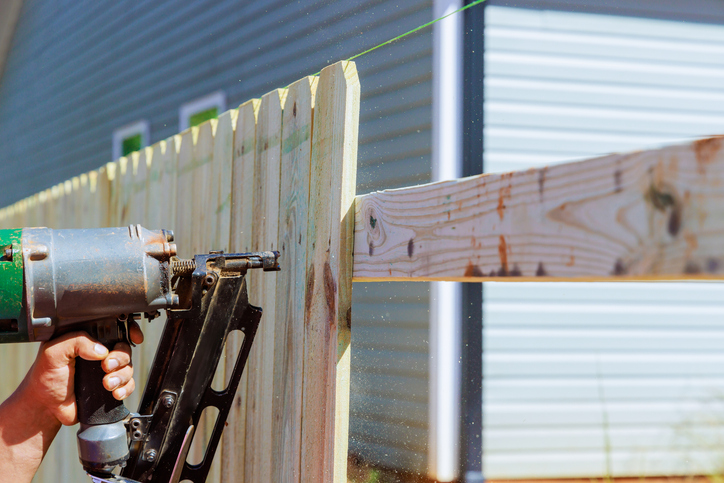In the construction industry, staying competitive means using tools that improve efficiency and accuracy. I have worked with different construction teams and have seen how the right software can make a significant difference for professionals and business owners in fence installation and construction. Choosing the right fence software is a decision that affects your projects.
With many options available, finding the one that meets your needs can be challenging. I recall a project where we struggled with scheduling and tracking materials. Switching to software designed for our industry helped us organize our workflow and reduce mistakes.
This guide will help you explore the options and choose the fencing software that best fits your business, helping you overcome challenges and enhance your operations.

Understanding Your Business Needs
Before you start evaluating software options, it is important to understand what your business needs. Here is a straightforward approach to help you determine your requirements and choose the right fence software.
Assessing Current Challenges
Each business has its unique challenges. For fence contractors and installers, these may include issues like inaccurate estimates, poor project management, and manual processes that are inefficient. Identifying these problems will guide you in finding the fencing software features that will be most beneficial.
Questions to Consider:
- Workflow Issues: What specific problems do you face in your current workflow?
- Estimation Accuracy: Are you experiencing issues with the accuracy of your estimates or meeting project deadlines?
- Tool Effectiveness: How well do your current tools support managing and tracking projects?
Answering these questions will show where fencing software can make a significant difference. For example, if manual calculations often lead to errors, you will benefit from fence software with automated estimation features.
Defining Key Requirements
Once you have identified your challenges, list the features and functions that your ideal fence software should include. This will help you choose software that directly addresses your needs.
Types of Projects:
- Residential Projects: Does the fencing software need to handle various types of residential fence projects, including different styles and materials?
- Commercial Projects: Do you need tools to manage large-scale commercial installations?
Required Features:
- Design Tools: Features for creating detailed fence designs and blueprints.
- Cost Estimation: Tools for accurately calculating material and labor costs.
- Project Management: Functions for tracking project progress, scheduling tasks, and managing resources.

Comparing Different Fence Software Options
With a clear understanding of your needs, you can now compare various fence software options. This guide will help you choose the right fencing software for your business.
Key Features to Consider
When evaluating fence software, focus on features that address your specific challenges and enhance your operations. Look for a solution that provides tools to streamline your workflow.
Usability and User Interface:
Questions to Consider:
- Is the fencing software straightforward to use?
- Can your team quickly learn to operate it?
Choose fencing software with an intuitive interface to reduce training time and ensure effective use from the start. For more on the importance of user-friendly design, read this article on software usability.
Integration with Other Tools:
Questions to Consider:
- Can the fence software integrate with your existing tools, such as accounting software or CRM systems?
- How well does the integration process work?
Effective integration is key to maintaining a smooth workflow and avoiding data management issues. Learn more about integration challenges and solutions in this guide to software integration.
Customer Support and Training:
Questions to Consider:
- What types of support does the fencing software offer?
- Are there training resources available for your team?
Reliable support and useful training materials are crucial for resolving issues and helping your team use the fence software effectively. For tips on evaluating customer support, see this overview of customer support best practices.
Evaluating Pricing Models
Understanding the pricing model of fence software is essential for budgeting and financial planning. Review the cost structure to ensure it offers good value.
Subscription vs. One-Time Payment:
Questions to Consider:
- Is the fencing software available through a subscription or as a one-time purchase?
- What are the costs associated with each option?
Subscription models typically include ongoing updates and support, while one-time purchases may involve additional costs for future updates or maintenance. For a detailed comparison of subscription versus one-time payment models, review this pricing model analysis.
Hidden Costs and Additional Fees:
Questions to Consider:
- Are there extra costs for additional features or services?
- What is the total cost of ownership over time?
Being aware of any extra fees or hidden costs helps you accurately assess the fence software’s long-term value. Explore this guide to identifying hidden software costs.

Reviewing User Feedback and Case Studies
User feedback and case studies are important for assessing fence software. Here is how to use these resources effectively.
Importance of User Reviews
Reviews from industry professionals offer insights into the fencing software’s performance.
Questions to Consider:
- What feedback do other users provide about the fence software’s performance and reliability?
- Are there recurring issues or common concerns?
Reviews can reveal both the strengths and limitations of the fencing software. For detailed feedback, check platforms like G2 or Capterra, where industry professionals share their experiences.
Analyzing Success Stories
Success stories from similar businesses can demonstrate how the fence software has been used effectively.
Steps to Review Success Stories:
- Find Relevant Case Studies:
- Search for case studies from companies in your industry that have used the fence software.
- Locate these case studies on the fencing software provider’s website or in industry publications.
- Evaluate Reported Benefits:
- Review the improvements reported, such as increased efficiency or fewer errors.
- Identify which features of the fence software contributed to these benefits.
- Compare Results to Your Needs:
- Determine if the reported benefits align with your business requirements.
Success stories provide practical examples of how the fencing software can impact your business.
Using user reviews and case studies helps you understand how well the fencing software fits your needs and the benefits it offers. This approach ensures you select fence software that delivers value and meets your specific requirements.

Testing and Trials
Before finalizing your choice of fence software, take advantage of demos and free trials to determine if the fencing software meets your business needs. Here is how to effectively use these evaluations.
Importance of Demos and Free Trials
Demos and free trials allow you to see how the fence software operates in your business environment.
Questions to Consider:
- How can you use the trial period to thoroughly evaluate the fencing software?
- Which features and functions should you focus on during the demo?
The trial period helps you assess whether the fencing software fits your needs and enhances your operations.
What to Look for During Testing
During the trial, evaluate how well the fencing software integrates with your current systems, its performance, and ease of use.
Questions to Consider:
- How well does the fencing software integrate with your existing systems and processes?
- Does the fencing software perform reliably under real-world conditions?
Steps to Evaluate During Testing:
- Test Integration:
- Check how the fence software connects with your current tools, such as CRM or project management systems.
- Ensure that data transfers smoothly between the new fence software and your existing systems.
- Assess Performance:
- Use the fence software in various scenarios to check its speed and stability.
- Note any issues related to performance or functionality.
- Evaluate User Experience:
- Review how user-friendly the fencing software is and whether it aligns with your team’s workflow.
- Confirm that the fence software supports effective task management.
Handling Error Codes and Technical Issues:
If you encounter technical issues or error codes during the trial, follow these steps:
- Error Codes:
- Error Code 404: Indicates that a page or resource cannot be found. Verify the URL or file path.
- Error Code 500: Indicates a server error. This issue is typically on the server’s end and may require contacting customer support.
- Technical Issues:
- Integration Problems: Ensure that system requirements are met and configurations are correct. Refer to the fencing software’s documentation for troubleshooting.
- Performance Issues: Observe how the fence software performs under different conditions and loads. Report significant problems to the support team with details from your testing.

Making the Final Decision
With all the information gathered, you are now ready to choose the best fence software for your business. Follow these steps to make an informed choice and ensure the fencing software meets your needs.
Weighing the Pros and Cons
Compare the available fencing software options based on their features, pricing, and user feedback. Evaluate both the benefits and limitations of each option.
Questions to Consider:
- What are the main advantages and disadvantages of each fencing software?
- How well does each option align with your business objectives?
Steps to Evaluate Pros and Cons:
- List Features:
- Document the key features of each fencing software.
- Compare these features with your business needs to find the best fit.
- Review Pricing:
- Examine the pricing structure for each fencing software, including subscription fees or one-time costs.
- Identify any additional costs or hidden fees that might affect your budget.
- Analyze Feedback:
- Read user reviews and case studies to see how each fence software performs in real-world situations.
- Note any common issues or notable benefits mentioned by users.
- Match with Goals:
- Assess how well each fencing software supports your business objectives.
- Consider how each option will scale with your business and integrate with your current systems.
Implementing and Training
After selecting the right fence software, plan its implementation and ensure your team receives adequate training.
Questions to Consider:
- What steps are necessary for a smooth implementation?
- How will you ensure that your team is properly trained on the new fencing software?
Steps for Implementation and Training:
- Create an Implementation Plan:
- Develop a detailed plan with milestones and deadlines.
- Assign roles and responsibilities for the setup process.
- Configure the Fence Software:
- Set up the fencing software according to your business needs.
- Ensure it integrates seamlessly with your existing systems.
- Conduct Training:
- Organize training sessions to cover the essential aspects of the fence software.
- Provide your team with useful resources, such as user manuals and online tutorials.
- Monitor the Transition:
- Track the progress of the implementation and address any issues that arise.
- Collect feedback from users to identify areas for improvement and make necessary adjustments.
Conclusion
Choosing the right fence software can significantly impact your business’s efficiency and accuracy. From my experience, the right fencing software can simplify project management and improve cost estimation. Investing time in selecting the right tool can lead to smoother workflows and fewer issues.
For instance, I worked with a client who struggled with outdated manual processes. When they upgraded to modern fence software, they found it easier to generate estimates, track project progress, and integrate with their existing systems. This change improved their efficiency and provided them with a competitive edge.
By understanding your needs, comparing different options, reviewing user feedback, and using demos and trials, you can make a well-informed decision that benefits your operations. Just like my client, you may find that the right fencing software streamlines your processes and supports your business’s success.
If you have questions or need assistance in choosing the right fence software, please reach out. We are here to help you make the best choice and achieve greater efficiency.

